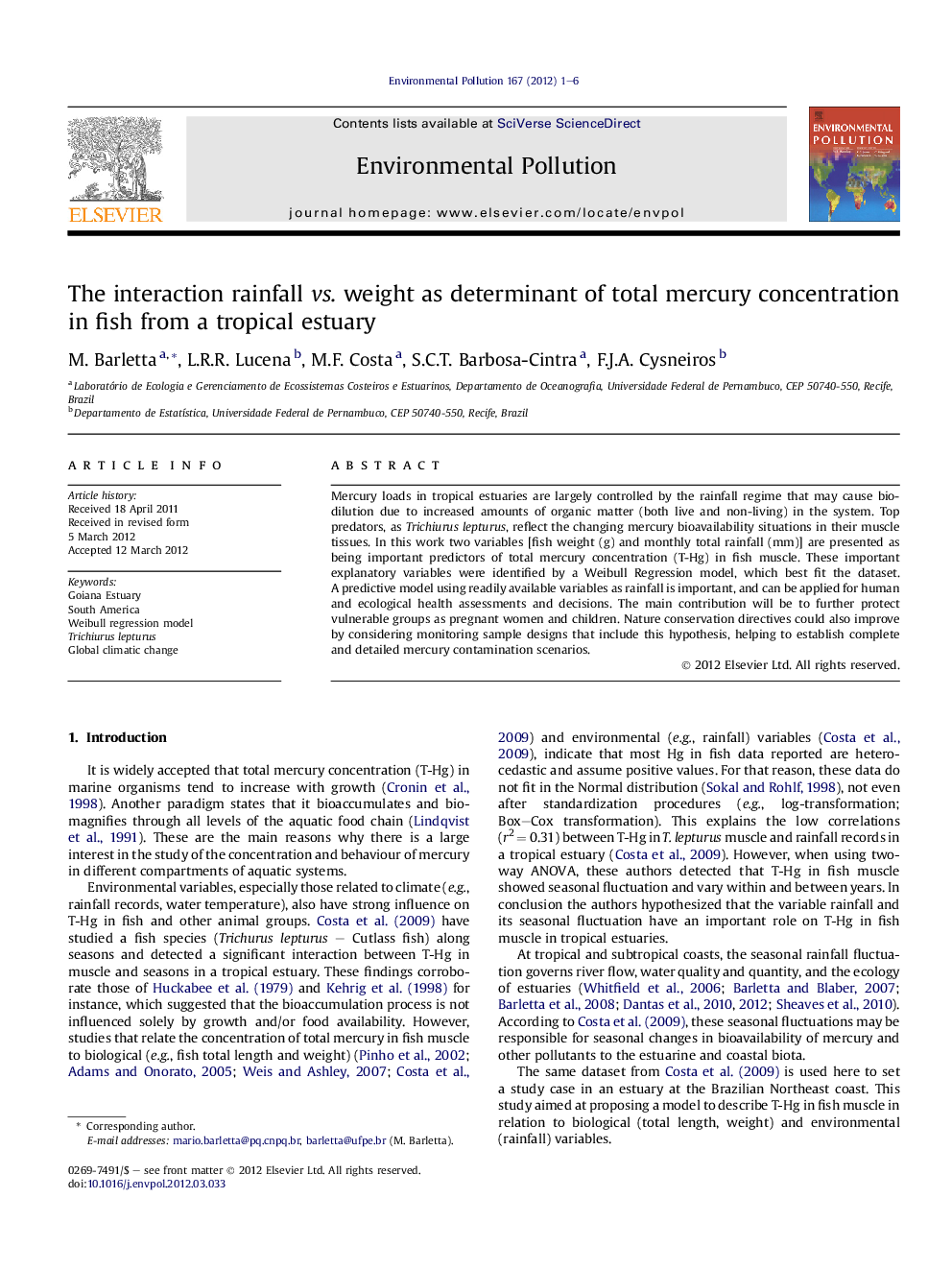| کد مقاله | کد نشریه | سال انتشار | مقاله انگلیسی | نسخه تمام متن |
|---|---|---|---|---|
| 4424546 | 1619205 | 2012 | 6 صفحه PDF | دانلود رایگان |

Mercury loads in tropical estuaries are largely controlled by the rainfall regime that may cause biodilution due to increased amounts of organic matter (both live and non-living) in the system. Top predators, as Trichiurus lepturus, reflect the changing mercury bioavailability situations in their muscle tissues. In this work two variables [fish weight (g) and monthly total rainfall (mm)] are presented as being important predictors of total mercury concentration (T-Hg) in fish muscle. These important explanatory variables were identified by a Weibull Regression model, which best fit the dataset. A predictive model using readily available variables as rainfall is important, and can be applied for human and ecological health assessments and decisions. The main contribution will be to further protect vulnerable groups as pregnant women and children. Nature conservation directives could also improve by considering monitoring sample designs that include this hypothesis, helping to establish complete and detailed mercury contamination scenarios.
► Questions previous statistical approaches that used heterocedastic data after transformation.
► Corroborates other works that pointed seasonal variations of the mercury burden in fish muscle.
► Defines rainfall as a major driver of mercury in predatory fish at tropical latitudes.
► Progresses in environmental data analysis and steps forward from previous approaches to Hg in fish.
► Proposes a model to predict scenarios of Hg in fish as a function of biological and environmental variables.
Journal: Environmental Pollution - Volume 167, August 2012, Pages 1–6